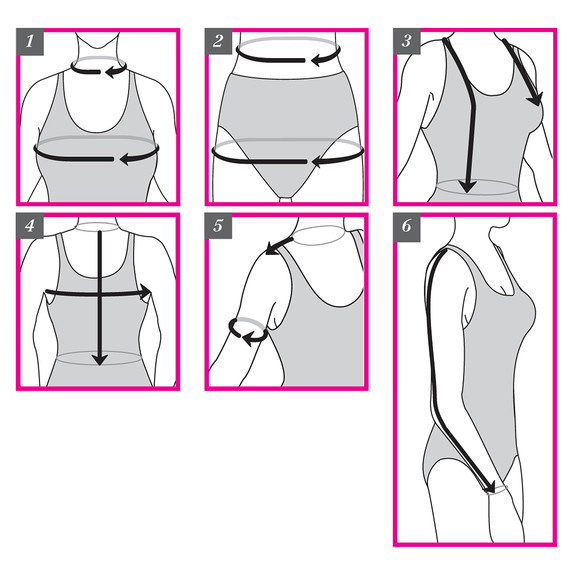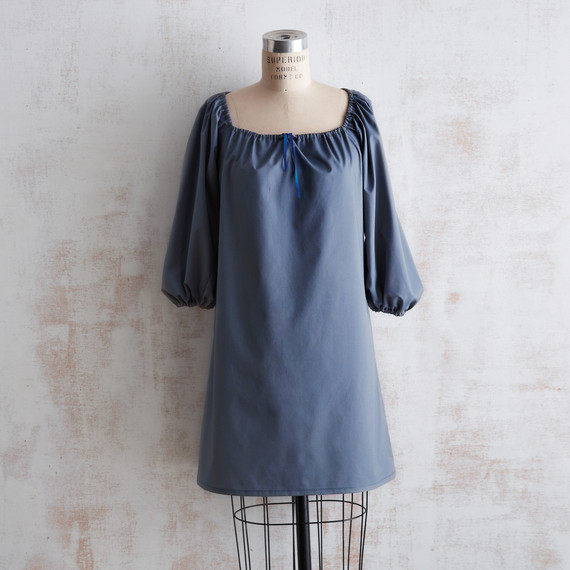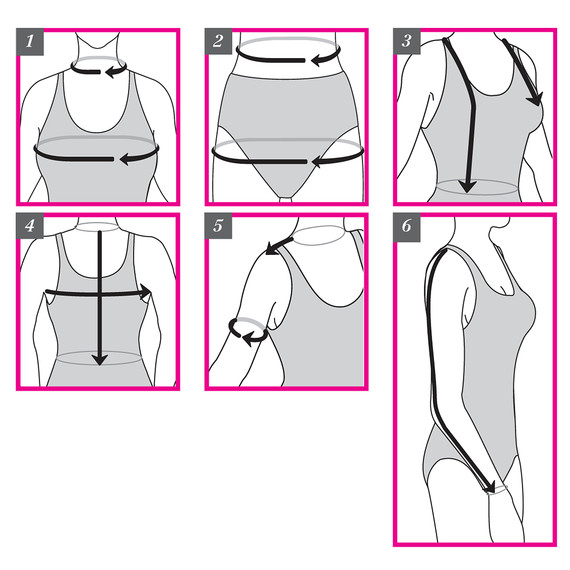

Photography by: Kate Mathis
Want to know the secret to perfectly fitting clothes? Easy — it’s your measurements! These will determine your pattern size when sewing, tailoring, and embellishing your own clothes.
Before you measure anything
Decide: Bra or no bra? Your bust level and circumference measurement will change with and without a bra on, so if you plan on wearing a bra with your finished garment, make sure you wear one during the measuring process. Otherwise, make sure you are wearing form-fitting clothing (like a tank-top and leggings) and your typical day-to-day undergarments.
Get help. Stand in front of a mirror and have someone on standby to assist you (especially for those back measurements.)
Use the right tape. More specifically, use a flexible measuring tape (rather than a fabric one, as those tend to stretch out over time.)
Check your posture. Stand upright in a relaxed position with your feet together. When measuring, breathe normally and make sure the tape is comfortably fitted to the body. (Don’t suck in that tummy — you will just end up with a tight-fitting garment!)
Steal this trick
When I measure myself, I pin 1/8″ of wide elastic material to a tight spandex dress that I slip on. I mark the center front and center back, then tie the elastic around my natural waist (about belly button level), hip (widest part), and bust (fullest part). This makes it easy to measure to the exact same place twice, so when you are determining your front waist length, you know the exact measurement. It also gives me a side seam reference so I can also determine my front and back waist length as well as my side seam length!
Try Out Our Measuring Tricks When Making This Tunic Dress

Follow This Body Measurement Chart
Ready to get started? These six measurements are the key reference points that most sewing pattern company size charts have — download a copy here for later reference.
1. Neck and Bust
To measure your neck, pull the tape around the middle, coming from the back to the front. It should sit at the base of the neck above the collar bone.
To measure your bust, bring the tape around your back and around to the front. Pull it around the apex (or fullest) point of your bust. It should be aligned parallel to the floor, making a straight, horizontal line across both your front and back. If you have someone to help, you record the measurement at the front with your hand down at your sides.
2. Waist and Hips
To measure your waist, don’t measure where your pants finish — this is not your natural waist! Your waist is the smallest part of your torso and right underneath your rib cage near your belly button. Make sure the tape is even across the front and back and parallel to the floor.
To measure the hips, keep this in mind: it is not where the top of your hip bone is, it is actually around the largest part of your hip area.
3. Front Waist Length
Start measuring from the side base of your neck, at the top shoulder line, and going down towards your waist level passing over your bust point. Try to keep the tape as straight as possible. To measure bust depth, use the same starting point on the shoulder as your front waist length, measuring down to the apex of your bust point.
4. Back Waist Length
This one is definitely a two person job, so call a friend and have them measure from the nape of the neck, down your spine and to your waist. To measure the back width, measure horizontally between your arm attachment points (underarm).
5. Shoulder
This is your shoulder seam length. Measure from the base of your neck right in the middle of your shoulder (from a bird’s eye view) and along to the tip of your shoulder. If you have trouble determining your shoulder tip, find a garment in your closet that fits well and has a collar and sleeve. Then measure the shoulder length of the garment.
To measure under the arm, wrap your measuring tape around the fullest part of your arm above your elbow.
6. Arm Length
Have your arm just slightly bent, and measure from the tip of your shoulder over the elbow to your wrist line. You will also need a friend for this measurement.
One last trick
Another great way to utilize your own personal body measurements is to draft your own set of slopers! Slopers are base sewing patterns used to establish fit and are then modified to create stylized sewing patterns perfectly fitting to your body. I teach on online course Slopers 101 where I show you how to take these body measurements and draft your own bodice, sleeve, and skirt pattern from scratch. As a special offer to Martha Stewart readers, you can get 50% off registration using code MSPROMO50, register here to join me!
Now, Try One of Our Stylish Sewing Projects
SOURCE:http://www.marthastewart.com/1504765/tricks-to-taking-accurate-body-measurements